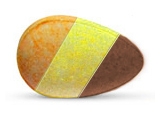Erectile recovery after prostatectomy
Prostatectomy is a surgical intervention to remove the prostate gland, commonly used as a treatment option for prostate cancer. Unfortunately, it often results in erectile dysfunction (ED) due to potential damage to the nerves and blood vessels responsible for penile erection. The extent of the damage and its impact on erectile function depends on various factors, including the patient's age, preoperative erectile function, and surgical technique.
Over 50% of patients experience ED after prostatectomy, and it may persist for a long time, affecting the patient's quality of life and self-esteem. However, there is hope for recovery, and multiple treatment options are available, such as phosphodiesterase-5 inhibitors, intracavernous injections, vacuum erection devices, and penile prostheses. The choice of therapy depends on the severity of ED, patient preference, and other clinical factors.
The recovery of erectile function after prostatectomy may take time, and patients should be aware of the potential for spontaneous improvement, especially in the first year after surgery. However, some men may not recover erectile function despite treatment or spontaneous improvement, and they may require additional interventions or psychosexual counseling. Therefore, it is essential to discuss the possible outcomes and treatment options with patients before undergoing prostatectomy, as well as involve them in the decision-making process to achieve the best possible outcome.
Erectile Function Recovery After Prostatectomy: Causes, Treatments, and Outlook
Causes
Prostatectomy, or surgical removal of the prostate, can have a significant impact on erectile function. This is because the prostate is located near the nerves and blood vessels that are responsible for maintaining an erection. During the surgery, these nerves and blood vessels may be damaged, leading to erectile dysfunction.
Other factors that can affect erectile function after prostatectomy include age, overall health, and the extent of the surgery. Older men, those with pre-existing health conditions, and those who undergo more extensive surgery may be at a higher risk for erectile dysfunction.
Treatments
There are several treatments available for erectile dysfunction after prostatectomy. These include medications such as sildenafil (Viagra), tadalafil (Cialis), and vardenafil (Levitra), which work by increasing blood flow to the penis. Other treatment options include penile injections, vacuum pumps, and penile implants.
It is important to discuss treatment options with a healthcare provider, as they can help determine which treatment is best based on an individual's specific needs and medical history.
Outlook
The outlook for erectile function recovery after prostatectomy varies depending on a number of factors, including age, overall health, and the extent of the surgery. While some men may experience a return to normal erectile function after surgery, others may require ongoing treatment to manage erectile dysfunction.
It is important to discuss expectations for erectile function recovery with a healthcare provider, as they can provide guidance on what to expect and how to manage any ongoing challenges.
Causes of Erectile Dysfunction after Prostatectomy
Nerve damage
One of the most common causes of erectile dysfunction after prostatectomy is nerve damage that occurs during the surgery. The nerves that control erections run alongside the prostate gland and can be damaged during the removal process. Even with nerve-sparing techniques, damage can still occur.
Reduced blood flow
Another cause of erectile dysfunction after prostatectomy is reduced blood flow to the penis. During the surgery, blood vessels that supply the penis with blood can also be damaged. This can result in a reduced ability to achieve and maintain an erection.
Prior erectile function
The degree of erectile dysfunction after prostatectomy can also be influenced by prior erectile function. Men who had a pre-existing problem with achieving and maintaining an erection before surgery are more likely to experience ongoing issues afterward.
Age
Age is also a factor that can affect erectile function recovery after prostatectomy. Older men are less likely to have a complete recovery of their erectile function, even when nerve-sparing techniques are used during the surgery.
Psychological factors
Psychological factors can also play a role in erectile dysfunction after prostatectomy. Anxiety and depression related to the diagnosis and treatment of prostate cancer can affect a man's ability to achieve and maintain an erection. Counseling and psychological support may be necessary to address these issues.
Surgical Solutions to Restore Erectile Function
Penile Implants
Penile implants, also known as penile prostheses, are surgically implanted devices that can help restore erectile function in men who have had a prostatectomy. There are two main types of penile implants: inflatable and semi-rigid. Inflatable implants consist of two cylinders that are inserted into the penis and a pump that is implanted in the scrotum. When the pump is activated, the cylinders fill with fluid, causing the penis to become erect. Semi-rigid implants are composed of bendable rods that are inserted into the penis and allow it to be positioned for intercourse.
Penile Rehabilitation Surgery
Penile rehabilitation surgery is a relatively new procedure that can help men regain erectile function after a prostatectomy. The surgery involves implanting a small device called a penile shunt, which connects an artery in the groin to a vein in the penis. This allows blood to flow into the penis, promoting natural erections. The procedure is minimally invasive and can be performed on an outpatient basis.
Other Surgical Options
In addition to penile implants and penile rehabilitation surgery, there are several other surgical options that can help men recover erectile function after a prostatectomy. These include:
- Nerve-sparing prostatectomy
- Nerve grafting
- Vascular reconstruction
- Arterial embolization
These procedures are typically reserved for men who have not responded to other treatments and have severe erectile dysfunction. They may be associated with more risks and complications than other treatments, so they should be carefully considered in consultation with a urologist or surgeon. Overall, the outlook for erectile function recovery after a prostatectomy is good with appropriate treatment and management.
Non-surgical Treatments for Erectile Dysfunction Post-prostatectomy
Oral Medications
Oral medications like sildenafil (Viagra), tadalafil (Cialis), and vardenafil (Levitra) are commonly prescribed to treat erectile dysfunction post-prostatectomy. These medications work by increasing blood flow to the penis, which can help achieve and maintain an erection. It is important to note that these medications should be prescribed by a doctor and used only as directed.
Vacuum Erection Devices
A vacuum erection device (VED) is a non-invasive tool used to create an erection by drawing blood into the penis. The device consists of a cylinder that is placed over the penis, and a pump that creates the vacuum. The erection is maintained with a constriction band that is placed at the base of the penis. VEDs can be a helpful option for men who do not want to use oral medications or who are unable to achieve an erection with medication alone.
Penile Injections
Penile injections of medications like alprostadil can also help to achieve an erection. The medication is injected directly into the penis, which causes increased blood flow. This treatment option is generally effective for men who are unable to achieve an erection with oral medications or VEDs.
Psychotherapy
Psychotherapy can be helpful for men who are experiencing erectile dysfunction post-prostatectomy. Counseling can help men address underlying psychological issues such as anxiety, depression, or relationship problems, which may be contributing to their erectile dysfunction.
Conclusion
While surgical treatments like penile implants or nerve-sparing surgery can be effective for treating erectile dysfunction post-prostatectomy, non-surgical treatments like oral medications, vacuum erection devices, penile injections, and psychotherapy can also be effective. It is important for men to talk to their doctors about their treatment options and to choose the approach that is best for their individual needs and circumstances.
Importance of Preoperative Counseling and Postoperative Care for Erectile Rehabilitation
Preoperative Counseling:
Preoperative counseling is a crucial aspect of the treatment process for patients undergoing prostatectomy. Patients who have realistic expectations regarding their postoperative sexual function status can anticipate the necessary steps for their erectile rehabilitation postoperatively. A medical practitioner, usually a urologist, should educate the patient about the different treatments available for ED, including pharmacological, surgical, and mechanical options.
In addition, patients should receive detailed information about the potential effects of prostatectomy on their sexual function. This information should include statistics on the percentage of men who experience ED following surgery, as well as the approximate timeline for recovery.
Postoperative Care:
Postoperative care is also integral in ensuring optimal erectile rehabilitation for patients following prostatectomy. Accordingly, patients should receive follow-up care from their medical practitioner, who can monitor their progress and adjust their treatment plan where necessary.
Patients should also be encouraged to adopt healthy lifestyle habits such as regular exercise, a balanced diet, and avoiding smoking and excessive alcohol intake. These lifestyle changes can help alleviate some of the risk factors associated with ED following prostatectomy, such as diabetes and cardiovascular disease.
Rehabilitation Strategies:
In terms of rehabilitation strategies, pharmacological options such as PDE5 inhibitors may be used to manage ED, while surgical options such as penile implants may be considered in more severe cases. Mechanical options such as vacuum erection devices can also be used to improve penile blood flow and enhance sexual function.
Overall, preoperative counseling and postoperative care play an indispensable role in optimizing erectile rehabilitation for patients following prostatectomy. By working with their medical practitioner and adopting healthy lifestyle choices, patients can significantly improve their sexual function and enhance their overall quality of life.
Outlook for Erectile Function Recovery after Prostatectomy
Factors Affecting Erectile Function Recovery
The recovery of erectile function after prostatectomy depends on various factors, such as age, preoperative erectile function, surgical technique, and the extent of nerve-sparing during the surgery. Generally, younger patients with good preoperative erectile function, plus nerve-sparing techniques during surgery, have higher chances of recovering erectile function.
Treatments for Erectile Dysfunction after Prostatectomy
If a patient experiences erectile dysfunction after prostatectomy, there are several treatments available. These treatments include oral medications, such as phosphodiesterase type 5 (PDE-5) inhibitors, intracavernous injections, vacuum erection devices, and penile implants. The choice of treatment depends on the patient's preference, physician's recommendations, and the severity of the erectile dysfunction.
Prognosis and Outlook
The recovery of erectile function after prostatectomy typically takes time, ranging from several months up to two years. After two years, the chances of erectile function recovery become lower. Patients should discuss their expectations with their physician and be aware that recovery results may vary. In some cases, patients may not fully recover erectile function, but with proper treatment, they may still be able to achieve satisfactory erectile function for sexual activity.
Follow us on Twitter @Pharmaceuticals #Pharmacy
Subscribe on YouTube @PharmaceuticalsYouTube





Be the first to comment on "Erectile recovery after prostatectomy"